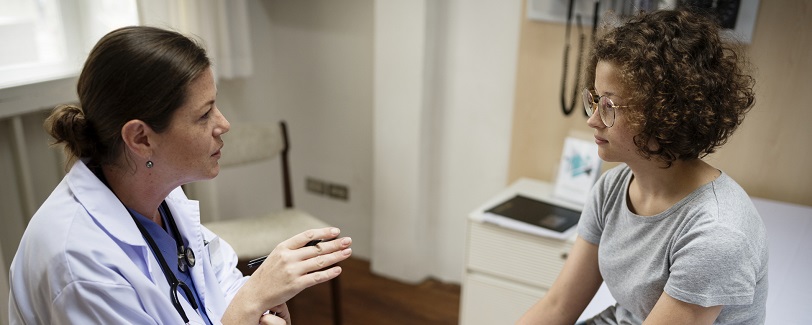Transitioning from CAMHS to AMHS: is policy maturing?
Your mental health care can be disrupted when you turn 18-year-old. Philip K. Marzouk reviews new plans to address this, laid out by NHS England last month.

The process of transitioning from Child and Adolescent Mental Health Services (CAMHS) to Adult Mental Health Services (AMHS) – a regular topic for parliamentary debate – has long been in need of some big changes. These changes, at least theoretically within the recently announced NHS ten-year plan, may be on the horizon. But is the current approach to making these changes adequate?
One of the starkest issues faced by young people involves the dramatic shift in entry requirements for care when moving from CAMHS to AMHS. For young people leaving CAMHS, the transition isn’t smooth. They don’t immediately qualify for continued care under adult services. In a vast majority of cases, the goalposts move and they’re entering into a distinct and separate system.
Vulnerable patients
Abbie* recently had to leave CAMHS and make the move to AMHS. The 19-year-old describes the experience of this shift as "sudden" and something that made them feel "more vulnerable".
"I did not feel supported because, even though staff didn’t directly say this to me, it felt obvious that the threshold for treatment as an adult was much higher," she continues. "It left me with a feeling that my problems weren’t bad enough. In my experience, it was all very disjointed as well. So it didn’t feel like much of a transition."
Red Thread, a London based charity that combine youth work and healthcare to ensure the safety and health of London’s youth, are regularly privy to these experiences. Lucy Knell-Taylor, youth work manager for Red Thread in the borough of Lambeth, argue that communication is a major issue during the transitional period.
"Young people aren’t sure if they don’t need CAMHS anymore, or they can’t see them anymore," Ms Knell-Taylor says. "That ambiguity shouldn’t exist. Too many young people don’t understand that they’re moving between services. Too many networks don’t understand what is happening. Too many young people end up coming to A & E when they should be being seen in the community in a way that feels safer for them."
While she spoke passionately about her concerns, the youth worker also highlighted that Lambeth’s clinical commissioning group, the local decision makers on health matters "have a really good grip – a much better one than I’d anticipated – of the mental health need profile of Lambeth."
"It was profoundly reassuring to me that they were able to say that our kids do not have the same needs as people outside the borough. I’m delighted to see them building that knowledge into their commissioning. However the problems in transitioning from CAMHS to AMHS are universal, they’re happening everywhere."
This is a big part of the NHS’ approach to future plans: decentralising decision making and deferring to local CCGs. Still, the NHS ten-year plan reflects that the experiences of young people have been listened to. “The structure of mental health services often creates gaps for young people undergoing the transition [from CAMHS to AMHS]”, it states, adding that the NHS “will extend current service models to create a comprehensive offer for 0-25 year olds”. It seems as though NHS England have heeded the issues within the process of transition.
Legislative loopholes
However, there are grave concerns about what the ten-year plan means on a practical and legislative level. The Children’s Society (TCS) has been campaigning to reform the process of transitioning from CAMHS to AMHS for years, to ensure young people aren’t left adrift with no care. They consulted with NHS England on the ten-year plan but are concerned about the lack of a centralised programme directive to address ambiguity in the transitionary period.
Richard Crellin, Policy and Research Manager at TCS, shares a feeling of trepidation about the implementation of these strategies, given that the plan is advisory to local authorities and CCGs, rather than a centralised directive. Not all CCGs will have the attitude or resources that Lambeth have.
"This is only an instruction to the NHS," Mr Crellin says. "It’s NHS England’s wish-list saying we want [local authorities] to move in that direction. Each local area will have to consult on a five-year plan which outlines how they will meet their commitments under the ten-year plan. They then submit this to NHS England to have their homework marked."
"There’s little power that NHS England have over clinical commissioning groups to force them to do these things. They can advise them and incentivise them, but often funding doesn’t reach children’s mental health services and we run the risk of that happening again unless the money for children is ring-fenced, which it currently is not." [Editors’ note – it arguably is now ring-fenced, following these changes 12 months ago.]
There is an awareness in parliament that this ambiguity needs to be addressed in a more comprehensive way than the ten-year plan currently proposes. Barbara Keeley MP, Shadow Minister for Mental Health and Social Care, told me: “The age at which people are discharged differs across the country. That can’t be right, as some children and young people are referred to adult services at 16 in some places, and 18 in others. CAMHS and AMHS services also often do not communicate as well as they should. The process of transition also tends to start too late – it should really start at least six months before the transition is due to occur.”
"Some of this requires some reasonable changes in the way CAMHS and AMHS services work together. That could be made easier by putting in place national guidance that supports transition. And involving clinicians and third sector groups to explore how transition works in practice and inform transition plans."
"It’s right that the government looks at a holistic transition service but this has to be supported with real investment and a timetable for roll-out."
The approach needs to be a combination of centralised directives and allocated funding, in combination with consultation with CCGs about the mental health profile of the young people in their areas. A clearer directive is needed that addresses nationwide concerns about young people facing uncertainty and falling off a cliff-edge with no care when leaving CAMHS if universal issues are to be addressed. Currently, the picture is one of positive signs that the issues with the transitionary process are being heard, but the approach to addressing them needs work.
*Name changed to protect anonymity.
Show your support for what you’ve read today. Enable us to keep finding and sharing the ideas that will better shape tomorrow’s mental health care.
Donation Information

Comments
Write a Comment
Comment Submitted